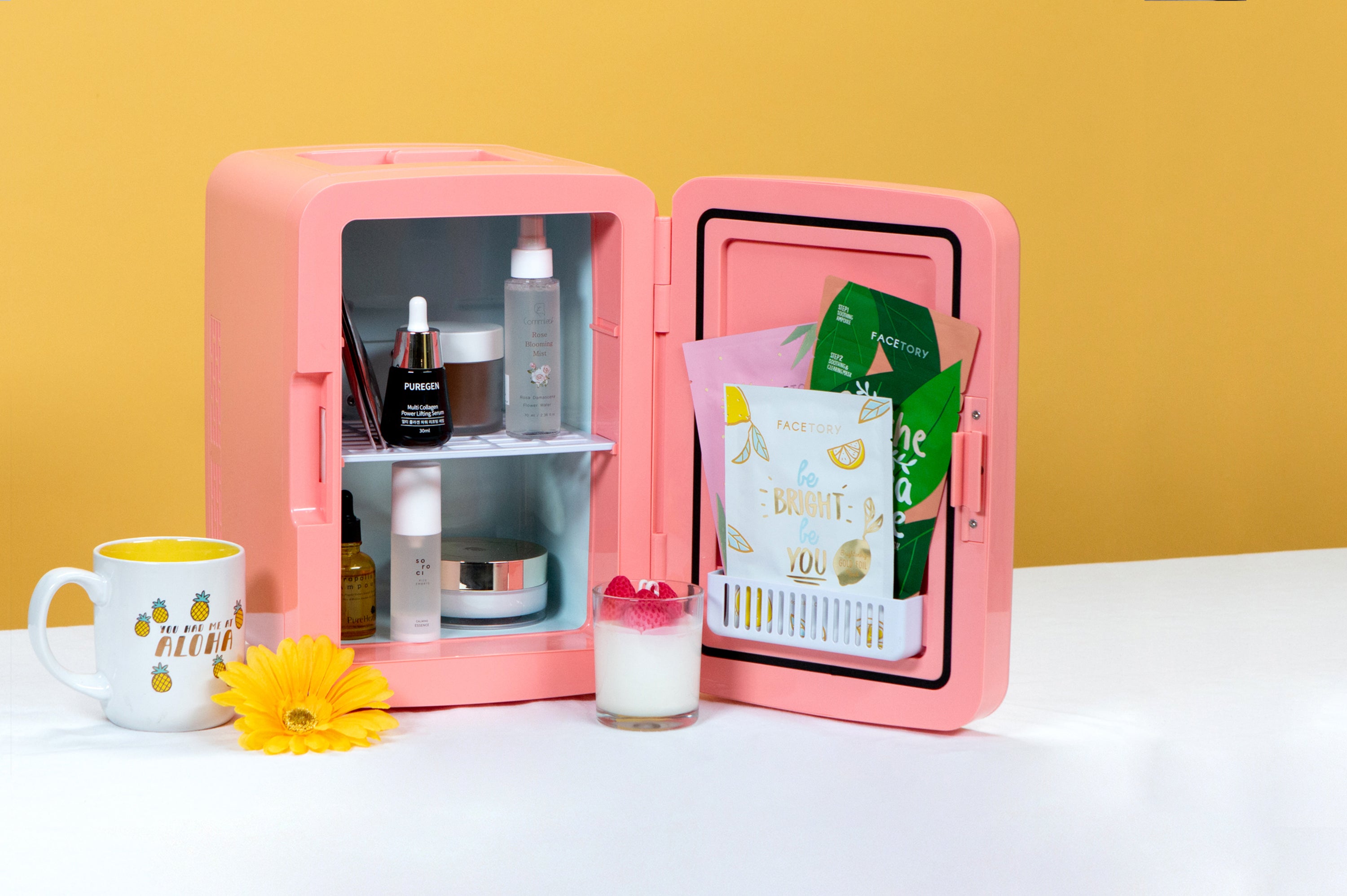Does Your Beauty Routine Need Its Own Refrigerator?
Give de-puffing products a boost.
“Cold can be a good part of certain treatments,” says Dr. Loretta Ciraldo, MD, FAAD, a board-certified dermatologist and founder of Dr. Loretta skincare. To reduce redness and tighten puffy spots (including under eyes or areas affected by rosacea), she suggests keeping hydrating masks or facial rollers cool. The chilly sensation can make the product or tool “seem more beneficial in terms of making blood vessels contract,” she explains. “Seem” being the operative word, as most of these skin-tightening benefits are short-lived. “Generally, I would not keep most things in the fridge,” she adds, as most stability testing is typically done at room temperature or in an oven. “Products aren’t generally formulated for refrigeration, so there is a chance that some may change and lessen in efficacy.”
Freshen up your skincare staples.
If your go-to serum or cream is packed with powerful ingredients that have a tendency to change color—such as green tea, vitamin C (L-ascorbic acid), retinol, or hydroquinone—storing it in a mini fridge might not be a bad idea. Cooler temps, along with preventing exposure to direct sunlight, can help keep the formula “fresher” and prevent it from darkening or decomposing, explains Dr. Loretta. That said, a well air-conditioned room works too. “In this case, it’s more about avoiding heat than making the product cold.” However, some topical prescriptions (like acne medications containing a combination of benzoyl peroxide and clindamycin) require refrigeration, so always read instructions and consult your derm before burying new skincare in dark bathroom drawers.
Prolong the life of your nail lacquer.
“I’ve refrigerated original samples of my JINsoon polish since 2013 and can say first hand that they still look true to their original color and viscosity,” says Choi, who notes that excessive heat and direct sunlight can make lacquers thick and sticky. A cool area that doesn’t get any sun exposure, like a closet or drawer, works equally well, as the main cause of “goopy” polish is actually air. “Each time a nail polish bottle is opened, the solvents evaporate,” explains Choi. “In general, the shelf life for nail polish is two years, but from my experience, it can last much longer provided you follow the sun and heat precautions and open the bottle for the shortest duration possible.” If you do decide to refrigerate your polish collection, be sure the caps are screwed on tight and always give the lacquer a good shake so that any separation disappears before you apply, advises Choi.
Keep calm and carry on.
In short, a beauty fridge isn’t exactly a necessity. You can certainly get away with relegating your ride-or-die products to a shelf or drawer outside of your bathroom (which has a tendency to fluctuate in temperature) and away from sunny windows. However, there is certainly something to be said for de-puffing your face using a freshly chilled jade roller or following up an at-home peel with a skin-cooling serum or mask (a trick Dr. Loretta uses to calm her complexion). And if your beauty routine has commandeered the crisper, one of these vanity-friendly coolers could be the answer to making space for your next farmers market haul. A few products to stock your mini fridge with year round: Dr. Loretta Tightening Eye Gel ($60), Grown Alchemist Soothing Body-Gel Lotion ($49), JINsoon Nail Polish in Plunge ($18), and Shiva Rose Radiant Rosewater ($80).
Our Mini Fridge Pick: FaceTory Fridge ($99)
Written by Amber Kallor
Photo by Facetory
More Subject:Matter
Seasonless Suncare, Skin Tips, and beyond from Dr. Marko Lens, Founder of Zelens. Sun care—a topic often reserved for months spent by the beach, has become a hot word (quite, literally) for all seasons.
Read more
